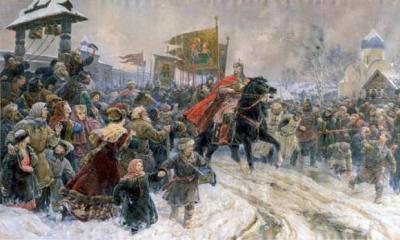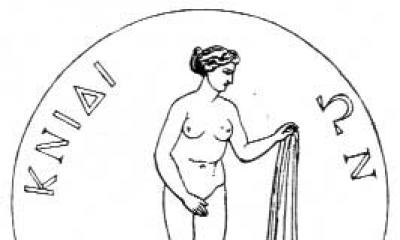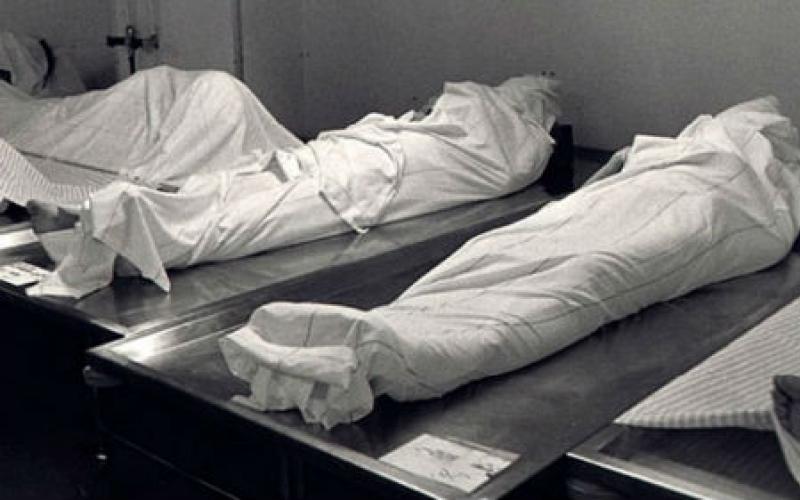A trademark is a company logo that allows consumers to easily distinguish the same or similar products from different manufacturers. Very often, this logo can also be called a trademark, or the abbreviation TM.
Any trademark, can be both one illustrative element, and some of their combined number. According to the Civil Code, the following elements can be used in TM logos:
- letters, numbers and words;
- pictures, symbols and illustrations;
- objects made in three-dimensional projection;
- a combination of several colors and shades;
- combined option, consisting of several of the above at the same time
The first option, which includes letters, words and numbers, is the simplest, and perhaps the most outdated. In order to develop a sign of this type, it is necessary, first of all, to choose the original font for the future inscription. The background, at the same time, can be absolutely any color, or even absent.
The inscription itself is made both in Cyrillic and in Latin, and it can consist not only of one word, but of a combination of several words, and even numbers. Vivid examples of paired inscriptions are such well-known brands as PlayStation, Coca Cola and Baza 24.
As for the trademark option with pictures, symbols and illustrations, it is considered the most popular today, and is used on the products of many world brands. As pictures, the logo can have both one item and several. As an example, one can imagine Apple, whose symbol is a bitten apple, or Lacoste, where TM is indicated by the image of a crocodile.
In addition to the usual items that can be depicted on a company logo, there are often original symbols that are not used anywhere in the Everyday life, except to indicate the manufacturer. For example, take the well-known company Nike. Its logo is a voluminous check mark of a rather unusual shape. The same applies to the sports brand Adidas, whose trademark has original symbols, in the form of three figures, non-geometric shape.
The third version of the logo, made in 3D projection, is the most original and is rarely used. Usually, the role of such a logo is not just a drawing, but a full-fledged object. For example, let's take the popular company Fanta, which produces a range of carbonated drinks.
If you are careful, you will notice that absolutely every container produced by this manufacturer has non-standard and extremely unusual shapes. Also, the original shape of the containers is also present in Coca Cola products. It is this detail that makes it possible to distinguish the goods of the aforementioned firms from similar ones.
By the way, despite the fact that such a logo, as mentioned earlier, is a full-fledged object, its registration is carried out as a three-dimensional figure with unique distinctive features, in all three planes. But beyond the simple registration process, this case, You will need to go through an additional process of obtaining rights to protect intellectual property. And that will be hard enough.
Well, the last version of TM is combined. Unlike other options, it does not have specific frameworks and definitions. At his disposal can be both letters and numbers, and a variety of pictures, with any combination of colors. As practice shows, such logos are the most common among Chinese manufacturers.
Is it necessary to make the logo in color?
We have already discussed the types of trademarks, and now let's move on to a fairly common question about how important it is to make a logo in color. When applying for trademark registration, the color of the logo does not matter, since it is not prescribed in the Law on the Protection of Rights to Marks of Goods and Services. But, if you look at this situation not from the side of the legislation, but from the side of the trademark owner, then the conclusions will be somewhat different.
For example, if the owner registers a company logo without specifying a color, or in simple terms: in black and white, then in the future this will provide its trademark with some advantage. After all, if the color is not specified, then it will not be an essential feature of this sign. And this, in turn, will enable the owner to change the color palette of the sign at any time, without filling out any additional agreements.
Well, in a situation where the color is indicated in the documents during registration, then in the future, the trademark owner must use the specified color palette. If the color of the logo is changed without certification in the documents, then it will not be considered valid, and if someone steals the design of this sign, it will not be possible to present claims to him.
But, it is worth noting that in some cases, specifying the color may be necessary. For example, if the logo is used as a sign above the store, or is part of the label pasted on the product. Well, if the logo is placed on a private business card, then its color is not required. In order to be sure of the need to specify the color, it is best to consult with lawyers.
Features of trademark registration
We have already studied the definition of a trademark, and its types, and now let's look directly at the registration process itself. In order to register a new trademark, it is necessary to apply to any authorized state body located in the vicinity of the firm or company that will own this mark.
In general, this process is optional, but if it is not followed, you will not receive any protection against plagiarism. Therefore, if you still decide to register a trademark, then you need to know some of the nuances of this procedure.
Registration of any logo takes place in accordance with its relation to certain groups of goods or services. The more such categories a company has, the more expensive, respectively, the registration itself will be.
As stated earlier, a logo may include: words, letters, numbers, pictures, or a 3D projection. But, the subject of all the above elements cannot be absolutely any, since there is a special filter for it. For example, one of the restrictions says that computer companies are not allowed to use an image of a computer.
Such nuances are very important, because according to statistics, due to their failure to comply, about 27% of the total number of applications for trademark registration were rejected. A complete list of prohibitions and restrictions is described in Art. 1483 GKRF. But, in addition to prohibitions, you should also follow the correct trademark registration algorithm.
Stages of TM registration
We already know that a trademark is an original logo that allows you to distinguish the products of one manufacturer from similar products of others. But how easy is it to register your own trademark? After all, in addition to the restrictions that must be observed in without fail, this procedure also has a strict sequence.
So, the first stage in the registration of TM is setting the goal of positioning products on the market. That is, in simpler words - the definition of its class, among the mass of other goods, both similar and not, made by other manufacturers. Such an event will allow you to avoid plagiarism on your part as much as possible when developing your own logo, and further claims from competing firms.
The second step in trademark registration is the selection of the main signs (illustrations, words, pictures, objects) that will appear on the trademark in the future, partially denoting its industry. It is worth noting that you should create several, distinguishable from each other, sketches at once, which will allow you to conduct a focus group in the future.
It is worth noting that the concept of a focus group means a special psychological technique. Its main goal is to have a group discussion, together with specialists, and make a detailed analysis of all options for a future trademark. This will help you make a choice for the benefit of future buyers.
The third step is to find similar registered logos by analyzing the open database of Rospatent. After all, having a ready-made sketch in your hands, you can compare it with existing logos belonging to other companies that produce products similar to yours. This will help you avoid plagiarism on your part.
The fourth step is to approve your choice in writing. This is done so that when applying for trademark registration to the authorized bodies, employees do not have any questions. Thus, you can save both your time and the time of those responsible for registration.
In addition to the choice of the logo itself, the written approval should also indicate its features. For example, it is necessary to indicate the color of the selected sign, or its absence. Additionally, specify the classes of goods to which this logo applies. And by the way, indicating the classes will help you calculate the approximate cost of the procedure yourself.
After submitting an official application, and filling in additional data with Rospatent employees, you can proceed to the next step - waiting for the documents to be received. This process can last from 30 to 45 days from the moment of certification of documents. Well, after you are given a full package of documents for the protection of your trademark, the registration procedure will not be completed.
In order to protect yourself from plagiarism as much as possible, it is recommended to additionally certify the package of documents with a notary. Of course it will make you spend excess funds, but in the future, in case of occurrence conflict situations, the decision of which will be carried out through the court, you will have additional protection, and the probability of winning in court will be almost 100%.
Well, at the very end of registration, it is mandatory to establish a trademark for accounting. This object (including TM in the form of a three-dimensional projection) is registered as an intangible asset owned by the enterprise. That is, in other words, it will have no value.
What is the validity period of a trademark registered with Rospatent
Does a registered trademark mean that it is a complete guarantee of the safety of your products, from any plagiarism? The answer is clear: yes. But, despite this, this security is temporary, and has its own characteristic framework.
In general, a document for the protection of any trademark is issued by Rospatent for a period not exceeding 10 years. However, if during the specified period, the owner of the TM regularly paid all taxes, then he has the right to a free extension of the protection for an additional 10 years. In order to carry out the renewal procedure, the logo owner only needs to write a corresponding application to Rospatent. After 5-10 working days, it will be checked for the absence of fines and claims from the tax office, and you will be given a positive or negative answer. This procedure can be repeated an infinite number of times.
It is extremely necessary to update the package of documents guaranteeing the protection of a trademark. Indeed, as practice shows, any recognizable brand has earned its popularity over the years, and the more fans it has, the higher the likelihood that fake products will be produced under your brand logo. This situation is very familiar to Apple, which has been struggling with the flow of non-genuine iPhones to the market for several years.
Based on this, we can conclude that, in fact, a trademark is under the protection of the state for an almost infinite amount of time, but only under the condition of full return. If you did not pay taxes on time, then you can not count on a quick and free renewal of Rospatent documents.
What is private label
We already know the definition of a trademark, but let's also consider such a concept as: own brand. private label, it – a logo owned not by a private person (individual or legal), but by a whole network of retail companies (supermarkets, restaurants, car washes, etc.)
The difference between a private or private brand, and a regular one, is that it bears much more responsibility for the quality of its products. Thus, control of retail companies will be carried out more frequently and very carefully.
Also, another characteristic difference of own brands is the cost of their products. As practice shows, it is on average 30% cheaper than that of competing companies that produce a similar product. Usually, such a difference between the pricing policy of retail chains and private firms is achieved due to the lack of marketing companies first in need. After all, thanks to big turnover goods on the spot, supermarket chains, car washes, restaurants, etc., do not need advertising.
The internal differences of such industries include the fact that all their products, for the most part, are produced in their own factories. As for small companies, their trade turnover is based on the purchase of goods from wholesalers.
Thanks to more stringent control methods, retail chain personnel are more closely monitoring the quality of their own products, and responding with lightning speed to new demands from their consumers. Therefore, a private label has a significant advantage for a store over similar competitors.
Special TM statuses
In addition to the standard registration of a trademark with Rospatent, each owner of a trademark has the right to receive an additional special status.
In general, today, there are only two statuses:
- collective mark;
- well-known sign.
The first category of signs includes groups, or even entire associations. outlets who use a collective trademark to protect the rights of their own product or service category.
For consumers, the designation of a collective TM means that all products that are located in different places, but under a single brand, have exactly the same characteristic properties. And as for protection from the state, then with the collective registration of TM, protection is more serious.
The category of well-known marks, as a rule, includes those trademarks that have gained wide popularity in the territory Russian Federation. This status is determined based on the analysis of the amount of goods sold by the applicant company and similar competing companies. In principle, this is all that is important to know about the categories of TM.
So, summing up, we can conclude that a trademark is a lot of advantages for any company, or a network of companies, provided both by the state and by consumers. Therefore, having your own, officially registered trademark is simply necessary.
Liked the article? Share with friends on social. networks:Trademarks are tools that allow you to protect and personalize your products. Only the person who has registered this symbol and name has the exclusive right to use it in their commercial activities.
What is a trademark
A trademark is a unique designation of a product that includes its name and visual logo. It is registered in a special order, which is established at the legislative level. We can say that this is a kind of visiting card of the company, which distinguishes it from manufacturers of similar product names.
Today, the market has reached a new level, when it is not so much products and services that compete, but the trademarks themselves. More often, a well-known brand is a more significant argument in favor of a purchase than the technical and qualitative characteristics of a product. In this regard, the protection of trademarks becomes even more relevant. This is also due to the fact that not only the product, but also the sign that identifies it, has a real monetary value.
Registration steps:
- developing a trademark and assessing the possibility of its application to a specific group of products;
- preliminary search for similar trademarks to exclude repetitions and accusations of illegal activity;
- an application to a specialized patent institution for the registration of its own trademark;
- obtaining official documents that give full right to use it and protect your rights as the sole owner.
Despite the apparent simplicity of the algorithm, the entire procedure can take up to a period of approximately 2 years.

What are trademarks for?
Trademarks of goods perform several important functions, among which are the following:
- give the products of various manufacturers individuality and a number of distinctive features;
- indicate the responsible person or organization to which claims can be made regarding the quality or safety of a particular thing or product;
- they are some guarantee of the level of quality (if we are talking about well-known brands that have been positively declaring themselves on the market for a long time);
- they can give goods a certain prestigious status, which gives them the right to declare a higher value without the risk of losing sales markets;
- facilitate the process of market segmentation, as it is quite easy to identify fans of a particular popular brand;
- provide ample opportunities for the promotion of new products or the development of new markets (for example, under the same trademark, products with completely different technical characteristics can be produced).

Trademark requirements
Trademarks are certain symbols to which a number of essential conditions and requirements are put forward:
- should be clear and easy to remember, with a minimum of fuzzy and illegible elements;
- a trademark must be individual and ensure recognition of the manufacturer among competitors;
- a trademark should create a positive and attractive image, and not cause any negative associations and emotions;
- a symbol that is a trademark must be protected (i.e., it must be possible to legally register it);
- the trademark must be new and not repeat or imitate already existing trademarks;
- must carry a certain meaning that will associate the logo with a particular product;
- a sign that identifies a product and a company must be universal in terms of the possibility of using it on packaging, in advertising, official documents and as a seal.

What cannot be a trademark
Trademarks are, first of all, a commercial concept, and therefore there are a number of categories that cannot be used in this context. These include:
- state attributes, such as flags, coats of arms and all kinds of emblems of ministries, departments, cities, districts, and so on;
- images of state awards in a particular industry, as well as distinctive signs;
- names and dates of state and international holidays.
In some cases, the ban on the use of the above categories may be lifted. Most often this applies to any state-owned enterprises.
Trademark application
The use of a trademark implies its application directly to the product itself and its packaging, advertising products, office documents, replicating it in print publications and other media. This can happen in several ways:
- creation and registration of your own unique trademark;
- transfer of product development to a partner company, which will sell products under its own brand;
- also, to increase sales, many manufacturers resort to a combination of the two previous methods.
Trademarks are a kind of identifier that a manufacturer can deal with in two ways:
- create a separate brand for each product name;
- release the entire family of products under a single trademark.
In the first option, you minimize the impact on your reputation if any of the products proves to be not the best. But in this situation, the cost of advertising increases at times. The second option makes your products recognizable and reduces marketing costs, but if one of the brands fails, this will affect the overall sales.

Right to use a trademark
Everyone should keep in mind that the right to a trademark is protected at the legislative level. physical or entity has the right to use it independently, as well as issue permission (or refusal) for this action to other market participants. It is worth saying that attempts to imitate or partially copy elements of an already registered trademark is already considered an offense and is the basis for applying to the courts.
The exclusive right to a trademark is certified in a special registration document. This paper is valid not only in the country of which the entrepreneur is a resident, but also abroad. It is worth noting that the document remains valid for 10 years, after which it is worth re-applying to confirm your trademark rights.

Illegal use of a trademark
In an effort to take advantage of the reputation of well-known manufacturers, some manufacturers often resort to unfair competition by putting someone else's trademark on their products. It should be noted that this offense falls under the criminal law. According to the law "On Trademarks, Service Marks and Appellations of Origin", the use of branded attributes by third parties is impossible without official permission from the entrepreneur.
It is worth noting that the initiation of a criminal case against the offender can be carried out even if there is no official complaint or statement from the injured party. At the same time, a prerequisite is the repeated commission of this act, as well as the infliction of material loss on the direct owner of the company's attributes.

Punishment
For the illegal use of a trademark, the violator may be awarded the following penalties:
- penalties, the amount of which can reach 300,000 rubles, as well as compensation for the amount of profit for 2 years lost by the injured party;
- forced labor, which can take up to 480 hours in total;
- imprisonment or restriction of liberty for up to 2 years with the simultaneous collection of a fine and compensation in favor of the injured party.
The penalty may be proportionately increased if the offense has been committed more than once.
Every businessman sooner or later comes across such terms as "trademark" and "trademark". However, not everyone clearly distinguishes between these concepts.
Trademark is a literal translation of the English term trade mark. This concept is often used in marketing and advertising. It is a set of certain images, properties and associations that allow products to stand out from competitors. The process of creating and promoting a trademark is called branding.
A trademark is born when a businessman comes up with a unique name for a product, develops a logo or creates a corporate identity. At the same time, the product may not differ in its characteristics from the products of competitors. However, since the creation of the trademark, it receives a certain image. After that, it is promoted.
The term "trademark" is very often used in everyday speech. However, it is not in Russian legislation. That is why, from a legal point of view, it is more correct to use the concept of "trademark". Although for businessmen these phrases are synonymous.
A trademark is a designation used to identify a company's products or services. It is recognized as an exclusive right, which is certified by a certificate. To obtain this document, it is necessary to go through the state registration procedure with Rospatent.
Studying modern books on marketing and sales, you can stumble upon such fairly common terms as a trademark and mark. In this article, we'll take a look at what it is a trademark is different from a trademark and how to use these expressions correctly in drawing up plans or strategies.
Let's first analyze all the concepts listed above in order to understand the terminology. A trademark is a set of drawings, abbreviations, associations and properties that make a company's products recognizable in the market. Competent companies begin life with the development of a brand name, which is considered the basis of the future business.
A trademark is a product that sets you apart from your competitors.
The product enters the market under its own brand, which creates its image, while it does not actually differ from other brands on the market. This is how a brand name is created.
Parsing this term, you should consider how it differs from the brand. The brand makes the product recognizable, it is no longer bought as oil, but as a specific product. To paraphrase, one might say thatand there is a brand, but promoted and known at least in its niche. As a rule, the brand has loyal customers and fans, its logo is recognizable and popular in the region, country or world.
To create a brand from TM, you should do marketing and develop a strategy for promoting products. The line between these concepts is thin, but clearly distinguishable - if the consumer knows the product, then this, in fact, is already a brand. Moreover, the greater the recognition, the more powerful the brand and the higher its price in case of sale.
Attention:it is noteworthy that there are differences between the brand and TM only in the CIS countries, in the rest of the world they practically do not exist.
Trademark
Next, consider what constitutes a related term. TM is a trademark with registered copyright. The trademark owner is the company, even if it was developed by third parties, it is under legal protection and is intellectual property. The sign says that such products are already on the market and they are registered.

The more popular the brand and trademark, the higher the sales
TK is of three types:
- Picture.
- Word/expression.
- Combined option.
Attention:if you just drew a logo or came up with a slogan, then it will not be an official TK. To protect it from duplication by competitors, you should officially register the mark as intellectual property and protect it from copying.
What is the importance of TM for the buyer
So you already knowand what are its main differences from the sign. Now let's look at why this concept is generally important for the company and the consumer.The main advantages of buying a well-known TM on the part of the buyer:
- Proven product. By purchasing a well-known brand, a person buys a proven and well-known product.
- Choice acceleration. Today, there are dozens of brands of various goods on the market, so the buyer usually focuses on those known to him.
- Purchasing pleasure. People know and love the products of the selected company, getting satisfaction from the purchase made.
Let's consider these points in more detail. What is the advantage of purchasing a proven product for the buyer? This is risk minimization (the product meets expectations), the absence of physical and financial risks (the product has already been tested and tested). This also includes the so-called psychological and social risks, problems with loss of time when advertising and results do not match.
As you can see, there are quite a lot of risks for the end consumer, so if there are famous brands will choose them, and not something new and unknown. This is a well-founded choice both from the point of view of logic and from the point of view of psychology. That is why it is important to bring TM to the consumer and turn it into a well-known brand - people will automatically buy it. Speeding up the purchase also applies to this section - if you see 20 different varieties of oil in the supermarket, then you are likely to take the one that you know or have already purchased and liked it. The buyer will not stand in front of the window for 10 minutes, reading the composition and the manufacturer, he will simply take what he knows.
The pleasure of buying is also the place to be - especially for hyped and well-known brands. A striking example is Apple products, for which fans line up and even spend the night under stores to purchase them in the “first wave”. People like to buy products of famous companies: clothes, cars, accessories, even food.

Develop a brand - along with it, the value of your brand grows
What do we want to promote? What do we register? What is the difference between a brand and a trade mark? Let's first understand the concepts.
As for the concept "brand", then it includes 3 elements:
- Availability of legal protection(any brand is by definition a registered trademark);
- Fame(In this, a brand, among other things, differs from a trademark: any brand is a trademark, but not every trademark can call itself a brand).
- Stable characteristic in the mind of the consumer, identifying product or service and differentiating, which distinguishes it from its competitors. So, seeing an air conditioner with the LG logo, we at least understand that this is a high-quality and inexpensive product, and that we are not ready to pay for it as much as we pay for Daikin or Panasonic (expensive brands). Although LG in recent times are strenuously trying to change the idea of \u200b\u200bthemselves, advertising with the slogan "Quality is in the power."
Most marketers confuse concepts, loudly calling their many trademarks - brands. But the problem is that, by definition, there cannot be many brands - there are a large number of simply incapable of containing the human brain. In April 2008, we decided to use http://direct.yandex.ru/ to make a cursory analysis of the popularity of air conditioner brands. We understood that such an analysis does not claim to be scientifically accurate, especially since it is carried out on the basis of statistics from just one of the search engines and only in a specific Internet environment. Nevertheless, the information obtained is very revealing.
| Air conditioner + brand | % of the total number of requests of this type |
|---|---|
| lg air conditioner | 17,30 |
| mitsubishi air conditioners | 12,63 |
| panasonic air conditioners | 11,76 |
| Daikin air conditioners | 10,56 |
| samsung air conditioners | 7,09 |
| toshiba air conditioners | 5,37 |
| air conditioners | 5,20 |
| hitachi air conditioners | 5,09 |
| fujitsu air conditioners | 3,17 |
| aeg air conditioners | 2,23 |
| sanyo air conditioners | 1,88 |
| midea air conditioners | 1,69 |
| air conditioners | 1,68 |
| mitsubishi electric air conditioners | 1,38 |
| haier air conditioners | 1,36 |
| kentatsu air conditioners | 1,33 |
| ballu air conditioners | 1,19 |
| sharp air conditioners | 1,03 |
| Dantex air conditioners | 1,00 |
| air conditioner mitsubishi heavy | 0,91 |
| air conditioners | 0,89 |
| air conditioning carrier | 0,84 |
| mcquay air conditioners | 0,79 |
| delonghi air conditioners | 0,78 |
| general climate air conditioners | 0,71 |
| york air conditioners | 0,51 |








